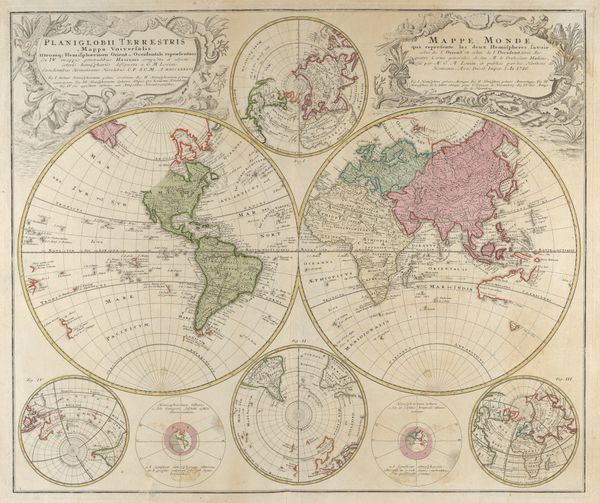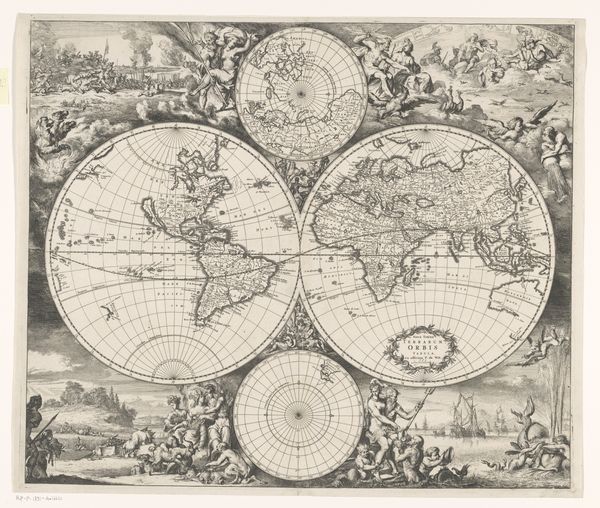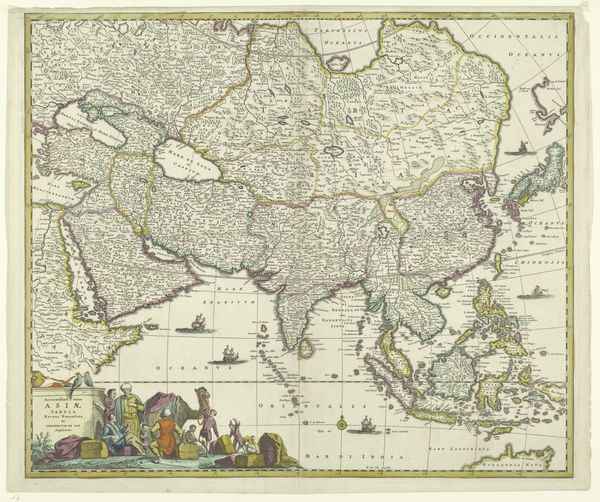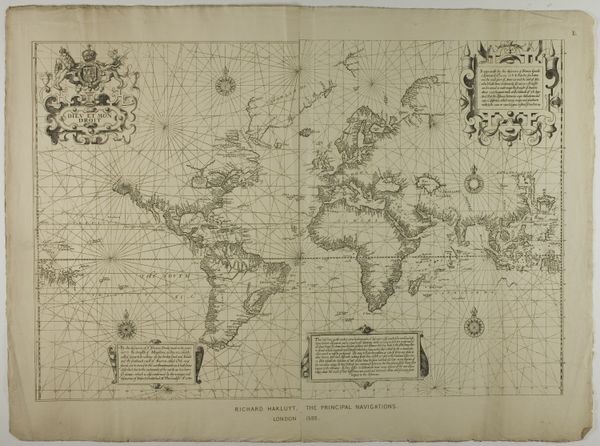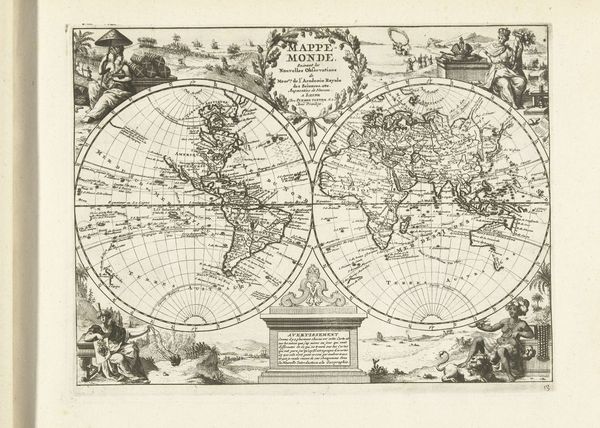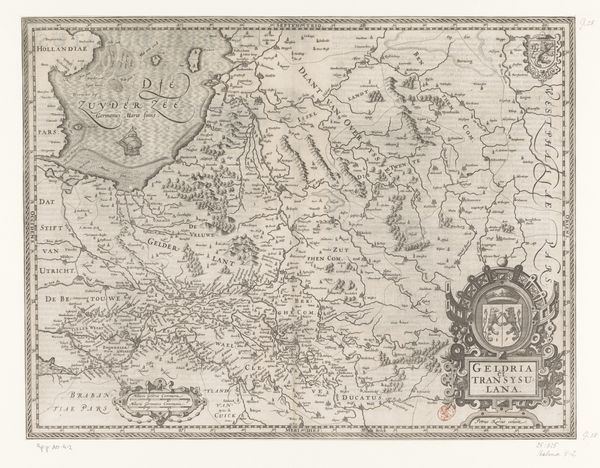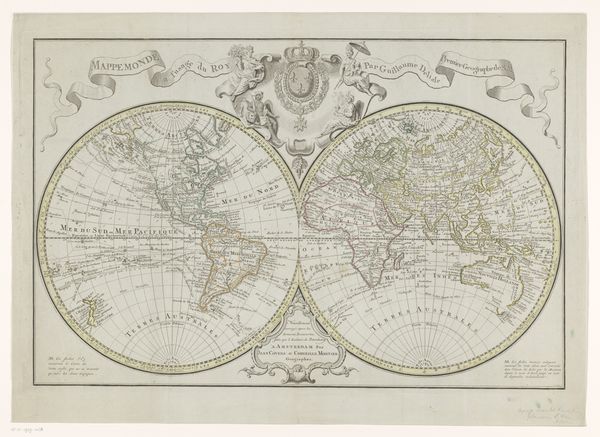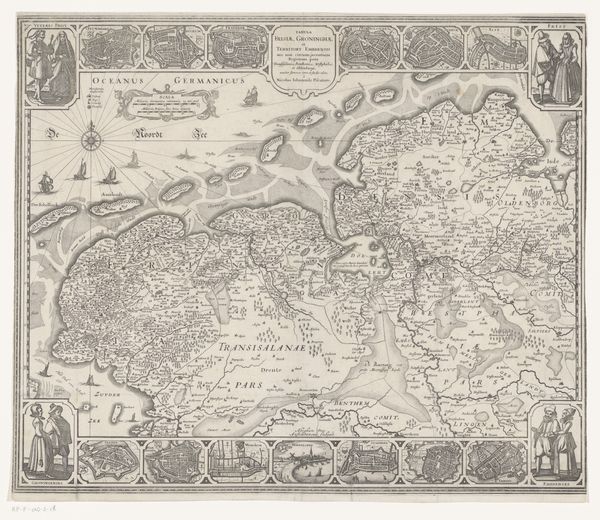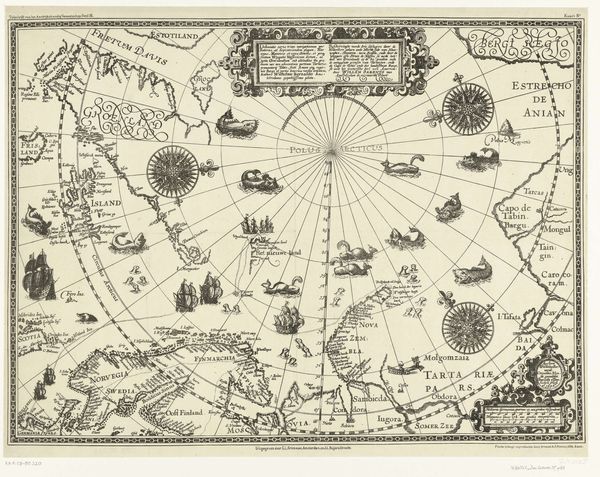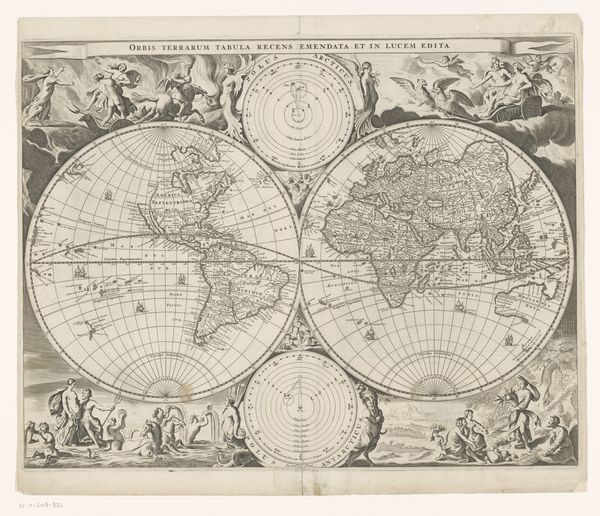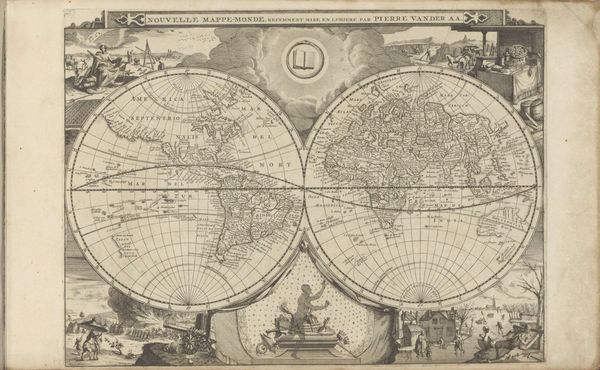
print, engraving
#
baroque
# print
#
asian-art
#
old engraving style
#
engraving
Dimensions: height 487 mm, width 600 mm
Copyright: Rijks Museum: Open Domain
Curator: Balthasar Ruyter's 1715 engraving, "Kaart van Japan," presents a fascinating, almost dreamlike vision of the Japanese archipelago. What are your initial thoughts on this baroque-era piece? Editor: Dreamlike is spot on! It's as if Japan is floating, adrift on a sea of European imagination. The crisp lines give a sense of authority, but the overall impression is…whimsical, in a cartographical sense. The balance of detailed geography and purely decorative elements creates a captivating tension. Curator: Precisely. Ruyter, working from the accounts and maps provided by Engelbert Kaempfer and Hendrik Doeff, crafts a world rooted in observation filtered through artistic convention. The intricate coastline is rendered with surprising accuracy for the time, juxtaposed against flourishes that remind us this is a designed object, a performance of knowledge, if you will. Editor: The vignettes definitely speak to that. I love how those little scenes – the European traders on the shore, that elaborate coat of arms held by the angels, and the smaller map in the lower right. All create a sense of theater, making the 'accuracy' of the central map, almost secondary. Do you think the European figures impose a gaze, suggesting they are 'discovering' the land? Curator: An insightful observation! Undoubtedly, the placement and scale of those figures serve to assert a European presence, framing Japan within a narrative of exploration and, perhaps, impending influence. Yet, consider the rigorous precision applied to the landmass itself. This isn’t pure fantasy; there's an attempt to capture the reality of the terrain. The print operates within the visual vocabulary of power, asserting dominance while still conveying tangible information. Editor: A visual assertion of knowledge…I see that, especially in the context of the Baroque period. It really makes you think about how maps aren’t just objective representations of space, but very active carriers of ideology and intent. Curator: Indeed. Ruyter's "Kaart van Japan" provides a unique point to reflect upon our relationship to cartography itself. It represents an interesting mixture of factual document, exoticised vision, and baroque showpiece. Editor: Absolutely. It's a potent reminder that even the most 'factual' of documents can be beautiful distortions, brimming with as much imagination as ‘truth’. Thank you.
Comments
No comments
Be the first to comment and join the conversation on the ultimate creative platform.

